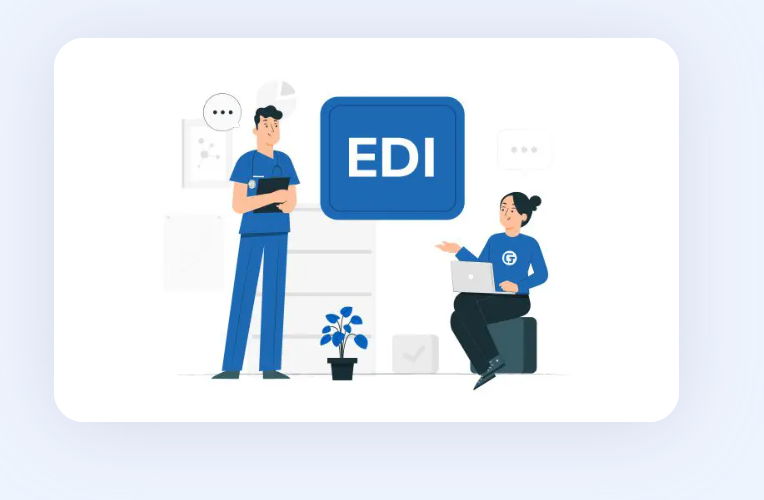Enhancing Healthcare Efficiency with EDI Transactions

In the ever-evolving landscape of healthcare, the importance of efficient data management cannot be overstated. Enter Electronic Data Interchange (EDI), a revolutionary technology that has significantly streamlined processes within the healthcare sector. EDI transactions in healthcare have emerged as a cornerstone for enhancing operational efficiency, reducing costs, and improving patient care. In this comprehensive guide, we delve into the intricacies of EDI transactions and their profound impact on the healthcare industry.
Understanding EDI Transactions
EDI transactions entail the electronic exchange of vital healthcare information between different stakeholders, such as healthcare providers, insurers, pharmacies, and patients. Unlike traditional paper-based systems, EDI enables the seamless transfer of data in a standardized electronic format. This encompasses a wide array of transactions, including claims processing, eligibility verification, remittance advice, and more.
Streamlining Administrative Processes
One of the primary advantages of EDI transactions in healthcare is their ability to streamline administrative processes. By automating tasks such as claims submission and adjudication, EDI reduces the need for manual intervention, thereby minimizing errors and accelerating turnaround times. This not only enhances operational efficiency but also frees up valuable resources that can be allocated towards more critical aspects of patient care.
Improving Accuracy and Compliance
In an industry where accuracy and compliance are paramount, EDI transactions offer unparalleled benefits. By adhering to standardized data formats and transmission protocols, EDI ensures data integrity while facilitating seamless interoperability between disparate systems. Furthermore, EDI helps healthcare organizations maintain compliance with regulatory requirements such as HIPAA (Health Insurance Portability and Accountability Act), safeguarding patient privacy and confidentiality.
Enhancing Cost Efficiency
Cost containment is a perennial challenge for healthcare providers, insurers, and patients alike. EDI transactions play a pivotal role in addressing this issue by minimizing overhead costs associated with manual data entry, paper-based documentation, and error correction. Moreover, the expedited processing enabled by EDI translates into faster reimbursements for providers and reduced administrative expenses for payers, ultimately leading to substantial cost savings across the board.
Key Components of EDI Transactions
To fully grasp the functionality of EDI transactions in healthcare, it's essential to understand their key components:
Transaction Sets
Transaction sets represent standardized formats for exchanging specific types of information, such as healthcare claims, enrollment updates, or pharmacy prescriptions. Common examples include the ANSI X12 format and the HL7 (Health Level Seven) standard, which define the structure and content of EDI messages.
Data Elements
Data elements comprise the individual fields within a transaction set, each carrying a specific piece of information. These elements encompass patient demographics, diagnosis codes, procedure details, insurance information, and other pertinent data required for healthcare transactions.
Communication Protocols
Communication protocols govern the transmission of EDI messages between trading partners, ensuring secure and reliable data exchange. Popular protocols include FTP (File Transfer Protocol), AS2 (Applicability Statement 2), and HTTPS (Hypertext Transfer Protocol Secure), each offering varying levels of security and efficiency.
The Future of EDI in Healthcare
As technology continues to evolve, so too does the role of EDI in shaping the future of healthcare. Emerging trends such as interoperability, artificial intelligence, and blockchain hold immense potential for further enhancing the efficacy of EDI transactions. By embracing these innovations and fostering collaboration across the healthcare ecosystem, organizations can unlock new opportunities for improving patient outcomes, driving operational excellence, and ultimately revolutionizing the delivery of healthcare services.
In conclusion, EDI transactions stand as a testament to the transformative power of technology in healthcare. By facilitating the seamless exchange of critical information, EDI drives efficiency, accuracy, and cost-effectiveness across the entire healthcare continuum. As we navigate the complexities of modern healthcare, embracing EDI emerges not only as a strategic imperative but also as a catalyst for innovation and progress.
- Industry
- Art
- Causes
- Crafts
- Dance
- Drinks
- Film
- Fitness
- Food
- الألعاب
- Gardening
- Health
- الرئيسية
- Literature
- Music
- Networking
- أخرى
- Party
- Religion
- Shopping
- Sports
- Theater
- Wellness
- News


